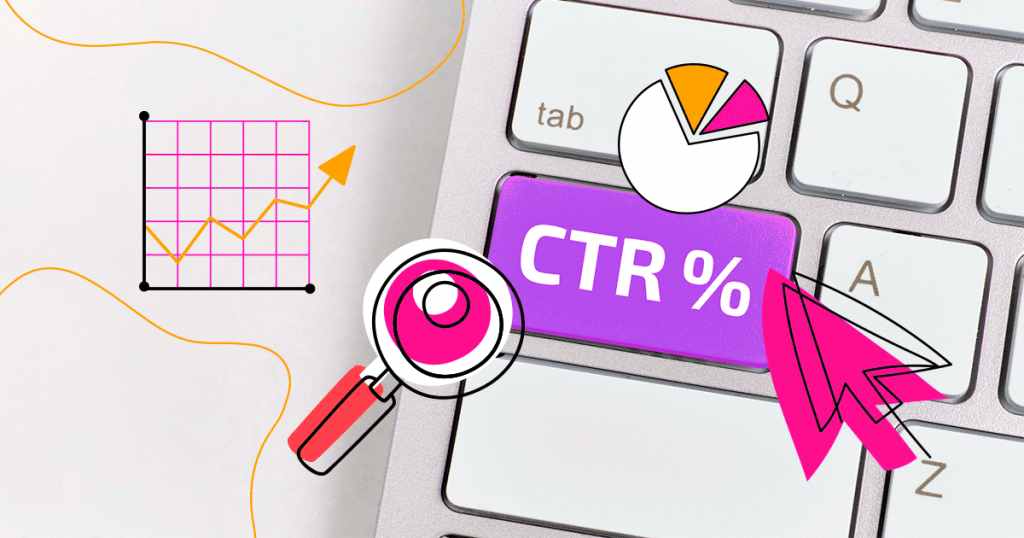Accelerate Your SEO Growth Via CTR Control
The importance of click-through rate (CTR) in the world of SEO can not be overemphasized, as it serves as a vital sign of individual involvement and web content performance. By recognizing and manipulating CTR via critical enhancements-- such as maximizing title tags and crafting persuasive meta summaries-- marketing experts can cultivate increased presence and organic growth.
Recognizing Click-Through Price
Click-through price (CTR) is a critical metric in electronic advertising, representing the percent of individuals that click on a certain link contrasted to the complete variety of individuals who see a web page, e-mail, or ad. This statistics acts as an important indicator of how effectively content involves its target market. A higher CTR suggests that the material reverberates with users, luring them to take activity, while a lower CTR may indicate a lack of relevance or rate of interest.
Recognizing CTR involves identifying its components and the variables that affect it (CTR Manipulation). Different components, such as engaging headlines, appropriate key phrases, and critical call-to-action placements, play a considerable duty in enhancing CTR. In addition, the context in which the web link is provided-- whether in an internet search engine result, an e-mail project, or social networks-- can influence individual engagement degrees
Keeping track of CTR in time enables marketing experts to evaluate the effectiveness of different approaches and make educated choices to enhance their projects. By assessing patterns and fads in CTR data, businesses can refine their material approaches, target details audience segments, and inevitably improve their electronic advertising performance. Hence, a thorough understanding of CTR is basic for driving effective advertising and marketing campaigns.
Significance of CTR in SEARCH ENGINE OPTIMIZATION
The relevance of click-through price (CTR) expands beyond user interaction; it is also a crucial component of search engine optimization (SEO) CTR acts as an indicator of just how well an internet site's content reverberates with its target audience. A greater CTR suggests that the web site is supplying pertinent and engaging information, which can cause improved natural positions.
Internet search engine, specifically Google, closely keep an eye on CTR as part of their algorithms. A web page with a high CTR signals to internet search engine that the content is important and credible, possibly enhancing its setting in search results page. Alternatively, reduced CTRs might suggest that individuals do not find the web content attractive, causing lower rankings.
Moreover, CTR can affect the general user experience, as it reflects the effectiveness of meta titles and descriptions in drawing in clicks - CTR Manipulation. This connection in between user actions and search engine performance highlights the significance of optimizing both content and presentation to boost CTR
Techniques for CTR Improvement
Improving click-through prices (CTR) calls for a calculated method that encompasses various strategies targeted at improving visibility and appeal in search results. One efficient approach is enhancing title tags and meta summaries. Crafting compelling, keyword-rich titles and descriptions can draw customers' focus, making them a lot more likely to click on your web link.

Furthermore, take into consideration A/B screening various headlines and descriptions to identify which variants resonate best with your target market (CTR Manipulation). This data-driven method allows continuous optimization based on customer choices
Incorporating numbers, questions, or emotional triggers in your titles can also considerably enhance CTR. For instance, titles that posture appealing concerns commonly compel customers to click to find solutions.
Finally, making sure mobile-friendliness is important, as an enhancing number of customers access the web Clicking Here using smart phones. A receptive layout improves user experience, leading to higher interaction rates. By executing these methods, you can properly improve your CTR, inevitably contributing to your total SEO success.
Studying User Actions
Comprehending customer actions is fundamental for optimizing click-through prices and boosting overall SEO performance. By evaluating just how individuals connect with search outcomes, brands can get valuable insights right into what drives engagement. Key metrics such as time invested in web page, bounce prices, and navigating patterns brighten users' choices and discomfort company website factors, enabling for targeted renovations.
To properly analyze individual habits, it is important to utilize tools like heatmaps and session recordings. These devices expose where individuals click most regularly and how they browse via content. Furthermore, customer studies and feedback mechanisms can give qualitative data that better clarifies preferences and motivations.
Segmentation of individual demographics additionally plays an important role in understanding habits. By categorizing individuals based upon variables such as age, place, and passions, marketing professionals can tailor content and headlines to fulfill certain audience requirements. This targeted method not only improves customer fulfillment but additionally improves the possibility of clicks.
Inevitably, a detailed analysis of customer actions furnishes marketing professionals with the knowledge essential to craft compelling titles and summaries, ultimately driving greater click-through prices and strengthening SEO approaches. Engaging individuals from the start lays the foundation for sustained website traffic and boosted online search engine visibility.
Determining CTR Success
Measuring click-through rate (CTR) success is vital for assessing the performance of SEO methods. CTR acts as an essential efficiency indicator, showing exactly how well your content resonates with customers and motivates them to involve with your site. To accurately examine CTR success, it is important to track metrics gradually, contrasting modifications prior to and after carrying out certain search engine optimization tactics.
Begin by using analytics tools, such as Google Analytics or Look Console, to collect information on organic search efficiency. Concentrate on recognizing the CTR for individual key phrases, pages, or projects to identify locations for renovation. A high CTR suggests that your title tags and meta summaries are engaging, while a low CTR may suggest the need for refinement.
Routinely assessing and enhancing your technique based on these insights not only improves CTR yet also contributes to total website exposure and position. Ultimately, a comprehensive method to gauging CTR success equips marketing professionals to make data-driven choices that promote sustained SEO growth.
Final Thought
